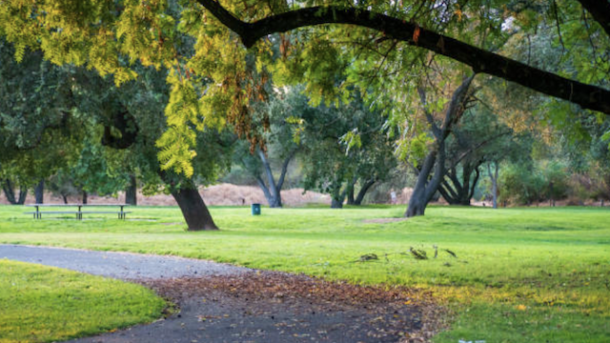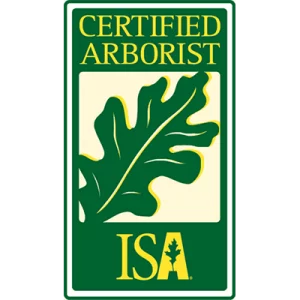The common characteristics of trees in Sacramento County, California, depend on the specific tree species that are prevalent in the area. However, here are some general characteristics of trees that you may find in Sacramento County:
SACRAMENTO COUNTY
TREE TRAITS
Drought Tolerance: Sacramento County has a Mediterranean climate, which means hot and dry summers and mild, wet winters. Therefore, most trees in this area have developed the ability to withstand drought conditions.
Deciduous or Evergreen: Trees in Sacramento County can be either deciduous (shedding their leaves in the fall) or evergreen (retaining their leaves year-round). Common deciduous trees in the area include oak, maple, and elm, while evergreen trees include pine, cedar, and eucalyptus.
Height and Shape: Trees in Sacramento County can vary in height and shape depending on the species. Some trees, like the valley oak, can grow up to 100 feet tall, while others, like the dogwood, grow to only about 20 feet tall. Trees can also have a variety of shapes, including conical, round, or spreading.
Bark and Leaves: The bark and leaves of trees in Sacramento County also vary by species. Some have smooth bark, while others have rough, textured bark. The leaves can be large or small, and they can have different shapes and colors, from green to yellow to red.
Wildlife Habitat: Trees in Sacramento County are an important habitat for a variety of wildlife, including birds, insects, and mammals. Many trees provide food, shelter, and nesting sites for these animals.
Overall, the trees in Sacramento County are diverse and adapted to the local climate and soil conditions.
SACRAMENTO COUNTY
TREE TYPES
There are many types of trees that grow in Sacramento County, California, but here are some common species:
Valley Oak (Quercus Lobata): This is the most common native oak in Sacramento County and can grow up to 100 feet tall. It has a wide, spreading crown and large, deeply lobed leaves.
Blue Oak (Quercus Douglasii): Another native oak in the area, the blue oak is a medium-sized tree with blue-green leaves that turn yellow in the fall. It is drought-tolerant and can grow in a variety of soil types.
California Buckeye (Aesculus Californica): This tree is known for its large, showy clusters of white or pink flowers in the spring. It has distinctive, palmate leaves and large, round fruit capsules.
Western Redbud (Cercis Occidentalis): This small tree has striking magenta flowers that bloom in the early spring before the leaves appear. It is drought-tolerant and easy to grow.
Chinese Pistache (Pistacia Chinensis): This deciduous tree has bright green leaves that turn brilliant shades of orange and red in the fall. It is resistant to drought and pests, making it a popular street tree in Sacramento.
Coast Redwood (Sequoia Sempervirens): Although not native to the area, the coast redwood can grow well in Sacramento with ample water. It is a tall, evergreen tree with soft, needle-like leaves and thick, reddish-brown bark.
These are just a few examples of the many tree species that can be found in Sacramento County, California. Looking to plant a tree in Sacramento County? Sacramento Tree Foundation provides an excellent list of recommended trees to plant in Sacramento. Their website is a great resource for anyone looking to learn more about Sacramento County tree species.
SACRAMENTO COUNTY
TREE CARE
Caring for a tree in Sacramento County, California, is important to ensure its health and longevity. Here are some tips on how to care for a tree:
Watering: In Sacramento County, trees need to be watered regularly during the dry season, which typically runs from late spring through early fall. Trees should be watered deeply at the base of the tree to encourage deep root growth.
Mulching: Applying a layer of mulch around the base of the tree can help retain moisture and regulate soil temperature. The mulch should be 2-3 inches deep and spread out to the tree’s dripline (the area under the tree’s outermost branches).
Pruning: Pruning trees can promote healthy growth and remove damaged or diseased branches. Trees should be pruned during the dormant season, typically in late fall or winter.
Fertilizing: Trees in Sacramento County may benefit from occasional fertilization, especially if they are growing in nutrient-poor soil. Fertilizer should be applied in the spring or fall.
Pest and Disease Control: Trees in Sacramento County are susceptible to a variety of pests and diseases. It is important to monitor trees for signs of damage or distress and take action if necessary. This may include pruning affected branches or treating the tree with insecticides or fungicides.
Consulting an Arborist: If you are unsure about how to care for a tree or suspect that it may have a problem, it is recommended to consult with a certified arborist from SCA Tree Care. They can provide expert advice and recommend appropriate care for your tree.
By following these tips, you can help ensure that your tree in Sacramento County remains healthy and beautiful for years to come.
SERVING ALL OF Sacramento, CA
Sacramento • Elk Grove • Citrus Heights • Folsom • Rancho Cordova • Galt • Isleton




